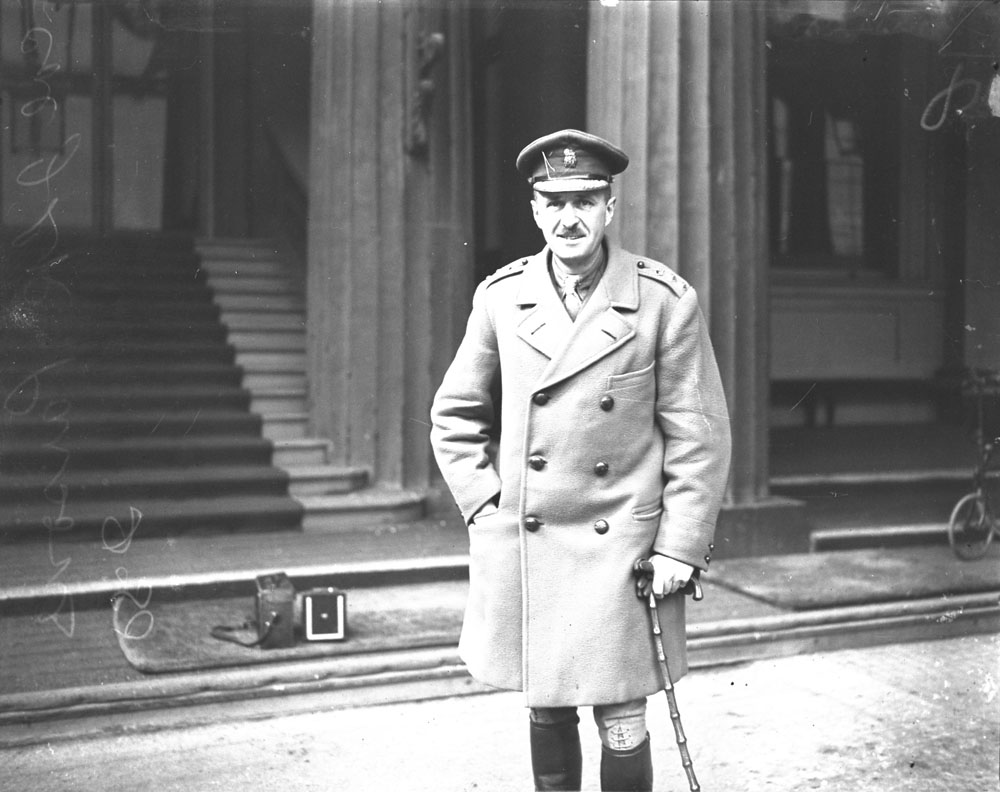Johnson Lindsay Rowlett Parsons, CMG, DSO, geologist, surveyor and military officer (born 18 January 1876 in Orangeville, ON; died 3 October 1935 in Saint John, NB). Johnson Parsons was a Canadian geologist and surveyor who joined the Canadian militia shortly after finishing his undergraduate degree. Upon the outbreak of the First World War, he joined the Canadian Expeditionary Force, where he worked as an intelligence officer. After the war, he returned to his engineering firm in Regina, Saskatchewan, before eventually retiring to New Brunswick.

Education and Professional Life
Johnson Parsons attended Harbord Collegiate in Toronto and graduated with a Bachelor of Arts from the University of Toronto in 1897. He continued his education and graduated in 1900 from the School of Practical Science (later the Faculty of Applied Science and Engineering at the University of Toronto).
During the summer months, Parsons was engaged on geological surveys in Northern Ontario and after graduation he was employed as a geologist by the Algoma Commercial Company at Sault Ste Marie, Ontario, until 1903. During this time, he acquired his Dominion Land Surveyors Commission.
Parsons settled in Regina, Saskatchewan, in 1904 and with his brother Wellington formed the Parsons Construction and Engineering Company. Parsons was appointed the first president of the Saskatchewan Land Surveyors Association upon its inauguration in 1910. Also in 1910, he married Minnie Weldon from Shediac, New Brunswick. They had two children: daughter Alma Kathleen and son Hailburton.
Military Career
Johnson Parsons first joined the military while studying in Toronto. In November 1898, he enlisted as an infantry private with the Queen’s Own Rifles of Canada. Sometime later, he transferred to the Canadian Corps of Guides as an officer and joined No. 2 Detachment of the Corps of Guides in Toronto.
By the First World War, Parsons was a major in the Corps of Guides, Military District 10 (which included Manitoba, Saskatchewan, and parts of north-west Ontario). At the outbreak of the war, he was posted to the 28th (Northwest) Battalion, which was recruited primarily from Saskatchewan, and sent overseas as part of the Canadian Expeditionary Force. He was appointed senior Canadian Corps intelligence officer from October 1916 until June 1917, taking over from Lt.-Col. Charles Hamilton Mitchell, another former Corps of Guides officer. Mitchell and Parsons were instrumental in establishing the Canadian Corps' intelligence organization and architecture. Parsons himself was credited with much of the intelligence behind the planning for Canadian offensive operations in 1917, including the Battle of Vimy Ridge.
In preparation for an offensive, intelligence staff collected information from a wide variety of sources, including aerial photographs, reports from unit intelligence officers and German prisoners. The compiled information was used to build scale models of the enemy lines, including details such as trenches, craters and enemy observation points. This allowed soldiers to become familiar with the territory in preparation for the attack.
In June 1917, Parsons was seriously injured while travelling between forward units near Camblain L’Abbe. He suffered from facial lacerations and a concussion, likely the result of artillery fire. After recovering from his injuries, Parsons spent the rest of the war in various staff positions and was promoted to colonel in March 1919.
Post-war Career
After the war, Parsons resumed work at his engineering company in Regina. Following his retirement in 1925, he moved to the east coast of Canada. In 1931, he was appointed temporary Brigadier, as District Officer Commanding Military District Number 7, which comprised the province of New Brunswick, with headquarters in Saint John. In early 1935, he retired due to ill health and was granted honorary rank of Brigadier.
Honours and awards
- Companion of the Order of St Michael & St George (1919)
- Distinguished Service Order (1917)
- Mentioned in Dispatches (1916, 1918, 1918, 1919)
- Légion d’Honneur, Croix de Chevaliers (France) (1919)
- Croix de Guerre (France) (1918)

 Share on Facebook
Share on Facebook Share on X
Share on X Share by Email
Share by Email Share on Google Classroom
Share on Google Classroom









